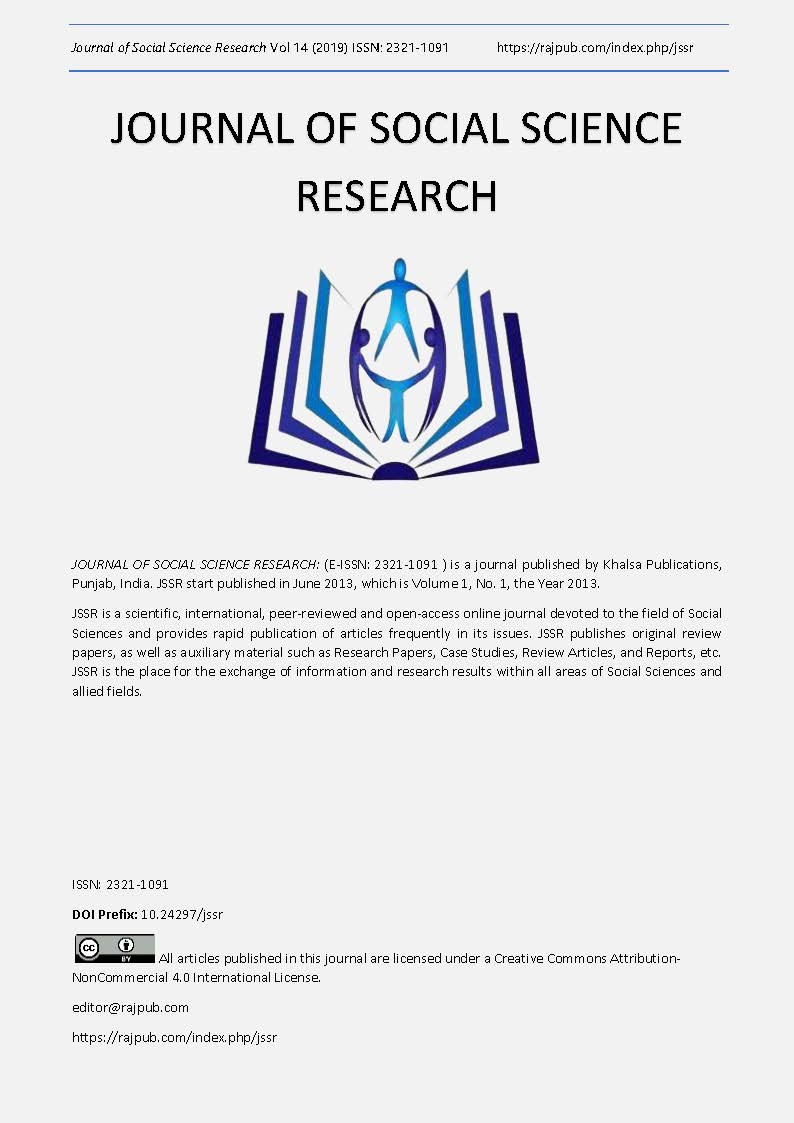Moderation and Modernism in India’s Nuclear Policy: Post 1974 Era
DOI:
https://doi.org/10.24297/jssr.v14i0.8147Keywords:
India, policy change, second explosion, security, no first useAbstract
India, after its first nuclear explosion in 1974 moved to modernize and moderate nuclear policy as security environment in the region deteriorated further due to China, pursuing a strategy of containing India by using Pakistan as a surrogate, had supplied technology nuclear materials and
warhead designs for the Pakistani bomb. Clearly with Chinese help Pakistani detonated six nuclear devices as follow up of India’s repeat detonation in the second week of May 1998. This development changed the security environment in South Asia forever and this time India convinced the international community that it would not become a destabilising nuclear force in the international system. Thus, in the post-1998 era India adopted two concepts, (i) No first use for attack or war and (ii) Credible minimum deterrence. As a step further in the direction India also signed with the US a nuclear deal under which it agreed to separate its civil and military nuclear facilities under international safeguard and supervision. The paper analyses the evolution of India’s nuclear capability in regional and global contexts.
Downloads
References
Alam, Dr. Aftab (1998). ‘Pakistan’s nuclear development and capability’, Third Concept, April-May, New Delhi, pp. 16-17.
Albright, David and Tom Zamora (1989). ‘India’s and Pakistan’s nuclear weapons’, Bulletin of the Atomic Scientists, June, p. 25.
Bhansali, S.R. ed. (1987). Peace and Disarmament; Jodhpur: Faculty of Law, University of Jodhpur, p. 431.
Bidwai, Praful (1991). ‘Nuclear Policy in a mess-NWFZ the realistic way out’, The Times of India, November 28.
Chellaney, Brahma (1993). ‘The challenge of arms control in South Asia, Survival, Vol. XXXV, No. 3, p. 122.
Chellaney, Brahma (1993). Nuclear Proliferation: The US-Indian Conflict. New Delhi: Orient Longman, p. 1.
Diskshit, Sandeep (2010). ‘Rajiv Gandhi Plan: A Valuable Solution’, The Hindu, August 9.
Hoodboy, Pervez (1999). ‘Pakistan and the deep cut regime’. In Harold A. Feiveson (ed.), The Nuclear Turning Point: A Blueprint for Deep Cuts and Dealer thing of Nuclear Weapons. Washington: Brookings Institution, p. 227.
Nagar, K.S. and Gautam Sharma, eds. (1990). India’s Security and Super Power Threat. New Delhi: Reliance Publishing House, p. 24.
Prakash, Arun (2010). ‘India’s Deterrent Capabilities’, South Asia Politics, Vol. 8, No. 11, March (New Delhi), pp. 3-4.
Rahamathulla, B. (1980). Indo-American Politics 1970-78. Delhi: Stanford University Press, p. 53.
Rajaraman, R. (2009). ‘The fizzle doesn’t really matter, The Hindu, September 9.
Ramana, M.V. (2008). ‘Deeper into the morass-ten years after Pokharan’, The Hindu, May 11.
Ramchandran, Shastri (1998). ‘Test of liberalism – trapped between bomb and bombast,’ The Times of India (Patna), May 21.
Saran, Shyam (2013). ‘Weapon that has more than symbolic value’, The Hindu, May 4.
Seth, S.P. (1988). ‘The Indo-Pak nuclear duet and the US’, Asian Survey, Vol. XXIII, No. 7, p. 711.
Singh, Dr. Poonam (2006). Indo-American Relations. Delhi:Vista International Publishing House, p. 92.
Singh, Rajkumar (2001). Indo-Pak Nuclear Tension 1974-1998. New Delhi: Samiksha Prakashan, p. 4.
Singh, Swaran (2001). ‘Evolution of nuclear posture’. In G.P. Deshpande, Alka Acharya (eds.), 50 Years of India-China Crossing a Bridge of Dreams, New Delhi: Tulika, p. 371.
Subrahmanyam, K. (1999).‘A credible deterrent logic of nuclear doctrine’, The Times of India, October 4.
Subramanian, R.R. (1984). ‘The nuclear factor in South Asian Strategy’, Strategic Analysis, Vol. VIII, No. 9, p. 829.
The Times of India (2003). New Delhi, February 8.
Downloads
Published
How to Cite
Issue
Section
License
 All articles published in Journal of Advances in Linguistics are licensed under a Creative Commons Attribution 4.0 International License.
All articles published in Journal of Advances in Linguistics are licensed under a Creative Commons Attribution 4.0 International License.




